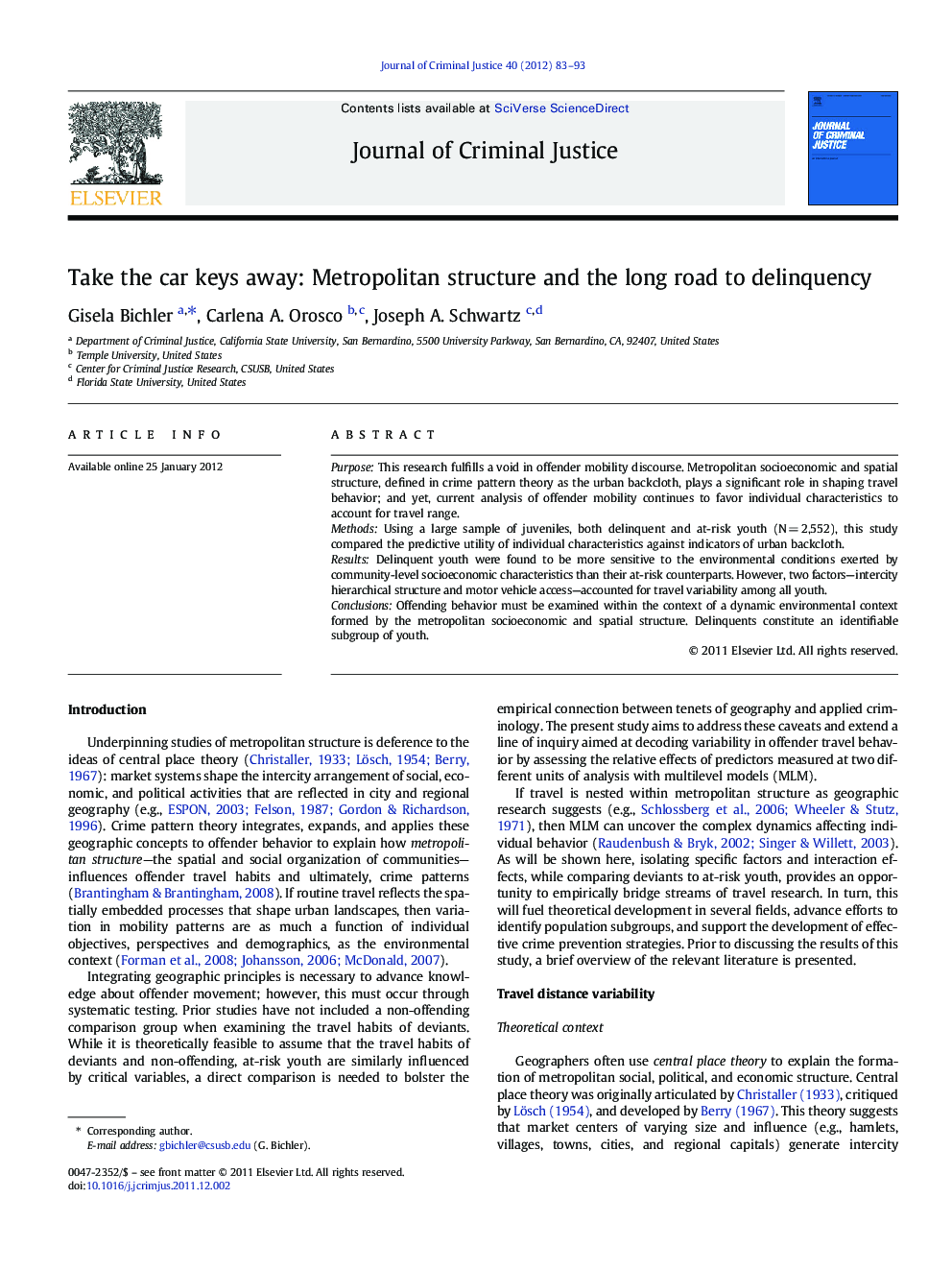| Article ID | Journal | Published Year | Pages | File Type |
|---|---|---|---|---|
| 882851 | Journal of Criminal Justice | 2012 | 11 Pages |
PurposeThis research fulfills a void in offender mobility discourse. Metropolitan socioeconomic and spatial structure, defined in crime pattern theory as the urban backcloth, plays a significant role in shaping travel behavior; and yet, current analysis of offender mobility continues to favor individual characteristics to account for travel range.MethodsUsing a large sample of juveniles, both delinquent and at-risk youth (N = 2,552), this study compared the predictive utility of individual characteristics against indicators of urban backcloth.ResultsDelinquent youth were found to be more sensitive to the environmental conditions exerted by community-level socioeconomic characteristics than their at-risk counterparts. However, two factors—intercity hierarchical structure and motor vehicle access—accounted for travel variability among all youth.ConclusionsOffending behavior must be examined within the context of a dynamic environmental context formed by the metropolitan socioeconomic and spatial structure. Delinquents constitute an identifiable subgroup of youth.
► This study compares delinquent and at-risk youth travel within the context of urban structure with a multilevel model. ► It is the first scholarship to examine offender travel within the urban structure. ► The findings show that distinctive population subgroups do exist within youths involved in juvenile probation. ► Regional metropolitan structure and vehicle accessibility increase the potential for delinquent youth to escape supervision ► The travel range of at-risk youth is significantly restricted and associated with the popularity of youth hangouts.
